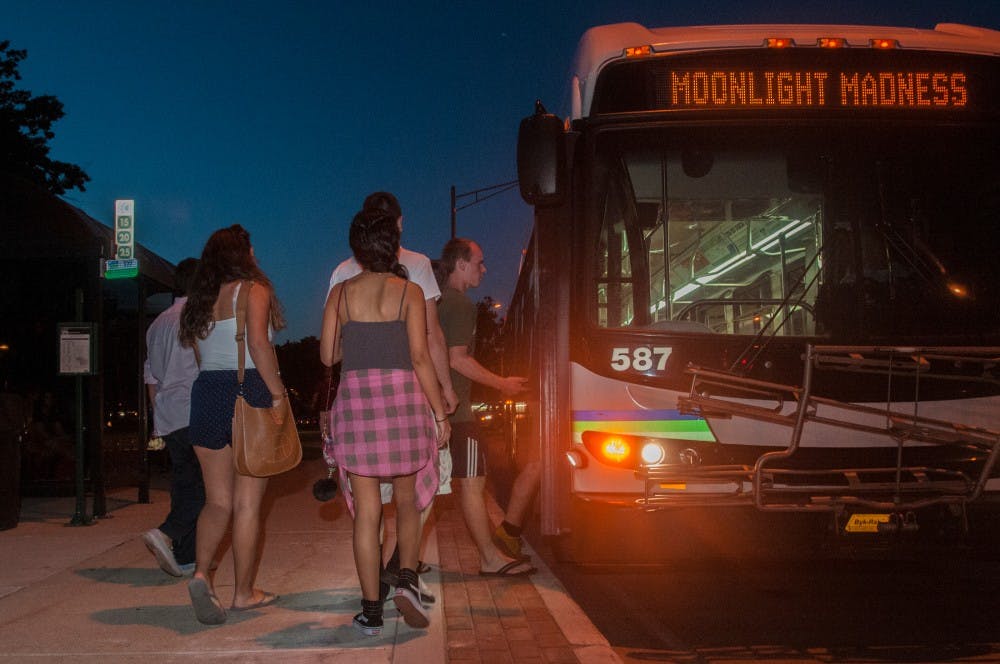The proposed CATA Bus Rapid Transit, or BRT, system is currently expecting a 2018 or early 2019 opening day and is currently in the “environmental assessment” phase for Federal Transportation Authority, or FTA, funding.
CATA’s website likens the BRT program to a light rail system, which uses high-capacity buses instead of trains. A dedicated lane will allow buses to transport riders quickly throughout the Michigan Avenue and Grand River Avenue corridor, replacing CATA bus route 1. The project would allow CATA to increase their transportation capacity without further disrupting traffic flow by adding more buses to auto lanes.
Director of Marketing for CATA Laurie Robison said this is unlikely to impact any MSU bus routes, but it’s too early to tell for sure.
“For efficiency in the corridor, (if they) connect with (the corridor) they might be impacted somewhat, but I think it’s premature at this point to really say,” Robison said.

The BRT project entered the FTA’s Capital Investment Grant, CIG, program in 2013, which can grant the project federal funding after a multi-year, multi-step process, information provided by the FTA via email states. The BRT project is currently in the “Project Development” phase of the process, where the project is planned and designed while the sponsor conducts an environmental review to measure the impact the project will have on the surrounding area.
“It was planned for construction to start ... in 2018, and it’s still in the plans that way,” Tri-County Regional Planning Commission Executive Director Susan Pigg said. “All of the environmental review work and data collection that was required has been completed throughout this region and it’s now sitting with the federal agencies for their review.”
The project will cost roughly $133 million for building infrastructure, stations and buying new buses, which is a nearly $100 million price drop from the original $230 million dollar estimate. Vast majority of funding will come from federal and state government levels.
Pigg said the project is at “30 percent engineering,” which means the logistics of where, how and in what ways the project would physically lay out on the corridor are about 1/3 of the way done. Five options were proposed as starting points for the project’s design in late fall 2016, Robison said.
“They’ve been running models about where vehicles come and go ... where are they likely to turn ... what other developments might impact traffic flows in and across the corridor, and all of that information has been vetted and analyzed again and they’ve been developing what they imagine the layout would be,” Pigg said.
All materials for the environmental review step were initially submitted a little more than a year and a half ago, with CATA since responding to a number of requests for additional information, Pigg said. While not much has happened since, Pigg said she’s noticed the sheer amount of public discussion regarding the project.
“A number of the conversations have questioned the safety of the project, or its value to the healthy climate of our region,” Pigg said. “I hope that those conversations continue. What I see is that a lot of the people commenting are people that were previously unfamiliar with all of the research and discussion that went into coming up with this idea in the first place.”
Although some progress has been made, the project appears to still be on hold while CATA awaits the FTA’s approval of the environmental assessment, though more information should become available once the federal government adopts a new budget for the coming year.
“We have submitted a draft environmental assessment for analysis to the FTA for review,” Robison said. “We’re waiting to hear back from them on that. ... As far as when we expect to hear back, that’s a question I guess for the FTA.”
The FTA, however, also appears not to have a timetable for the assessment’s approval. In a statement, the FTA suggested CATA be contacted for a timetable regarding
the environmental review.
Robison could not confirm an exact date the initial assessment was submitted at the time of publication. Robison said CATA found no environmental impacts that gave them pause, but are waiting on the FTA to weigh in on their findings.
“We’re just eager to hear back from, get a response from the FTA and see where that takes us,” Robison said.

